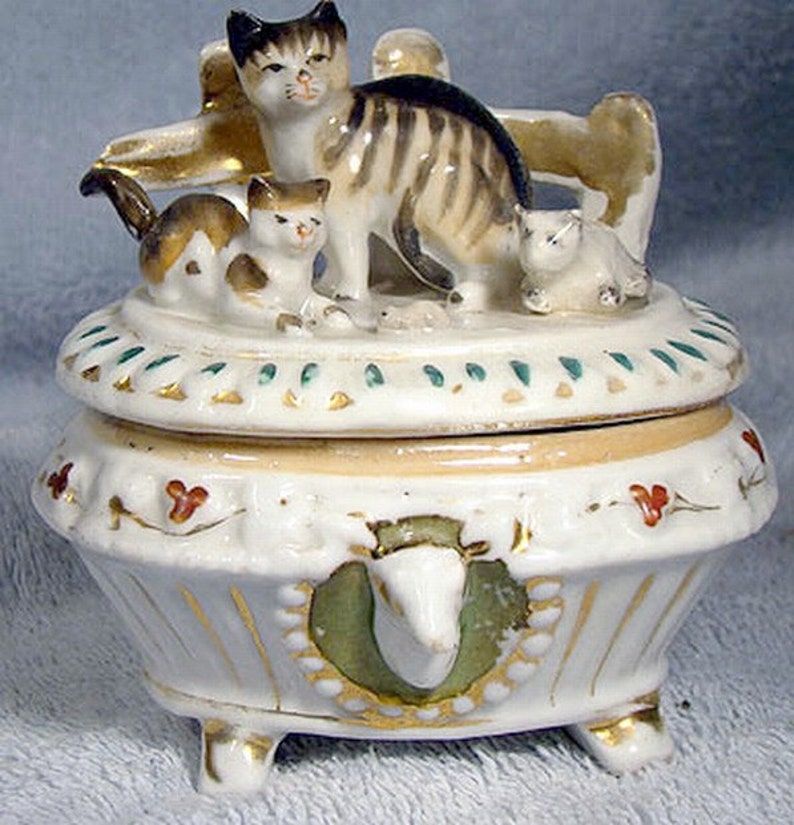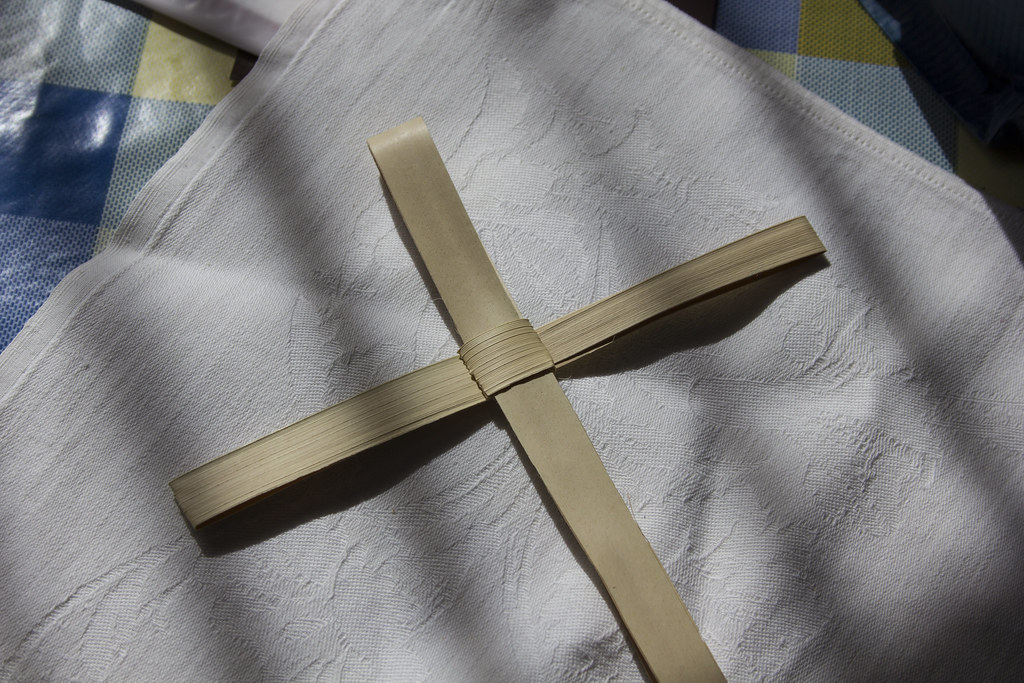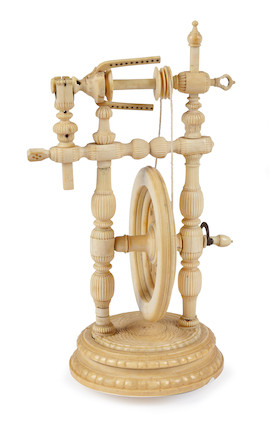As a historian, I most often work with texts, especially letters. But the past is present in the rest of my life through objects. My grandmother, who died before I was born, was an antiques dealer and collector, and many of her things, and their stories, passed down to my mother, who has an extraordinary visual memory. The question "where did this come from?" is the key to the stories she keeps; it gives access to people and places I will never know. This background makes me readily believe that objects can serve as vessels of memory.
Recently, I was delighted by a scene in "Summer Nights", a short story by Elizabeth Bowen, where the keepsakes of one of the story's minor characters, Aunt Fran, are described:
Round the room, on the ledges and brackets, stood the fetishes she had traveled through life with. They were memories--photos in little warped frames, musty, round straw boxes, china kittens, palm crosses, three Japanese monkeys, bambini, a Lincoln Imp, a merry-thought pen-wiper, an ivory spinning wheel from Cologne. From these objects the original virtue had by now almost evaporated. These gifts' givers, known on her lonely journey, were by now as faint as their photographs: she no longer knew, now, where anyone was. All the more, her nature clung to these objects that moved with her slowly towards the dark.
Elizabeth Bowen, "Summer Night, " reprinted in The Granta Book of the Irish Short Story, edited by Ann Enright, (London, 2010), pp. 78-9
Imagining this as a gathering of what a shop sign would call "antiques and collectibles", I began to wonder what these objects might look like. "Summer Night" was published in 1941, and Aunt Fran is described as an old lady, so I used the word Victorian in my image searches.
photos in little warped frames: I enjoyed looking at lots of elaborate Victorian photo frames on ebay but chose this very simple example; the adjectives "little" and "warped" suggest something not very elaborate.
 | |||||
| Image source: ebay.com | |
musty, round straw boxes: The straw box below isn't the right shape but it was surprisingly tricky to find examples of Victorian straw work. The example below so pretty--I wonder if the decoration technique might be a form of straw marquetry? "Musty", does, however, suggest a little trinket box made entirely out of straw. Decorated wood, like the box below, would likely be sturdier.
 | |||||
| Image source: Rubylane |
china kittens: There are, as anyone who has gone into an antique store knows, a lot of cat figurines in this old world. With boxes still on my mind, I thought this was an utterly charming examples of china kittens.
 | |||||||
| Image source: etsy.com |
palm crosses: Given the tone of the passage and the other keepsakes on Aunt Fran's shelves, I imagine these being kept as mementos of time spent with loved ones, as well as for their value as religious objects. Passages of the Bible which describe the arrival of Jesus Christ in Jerusalem, shortly before his execution, mention that the crowds which accompanied him and his disciples were carrying palm branches. Palm Sunday, the commemoration of this event in the Christian religious calendar, is celebrated on the Sunday before Easter; many churches include a procession with palms in their celebrations. These palms are often made into crosses and kept until the church service that marks the start of Lent.
 |
| "Good Friday: Palm Cross" by Dai Lygad is licensed under CC BY 2.0. |
three Japanese monkeys: While the story doesn't say, enough of my searches for "Victorian Japanese monkeys" came back with these "speak no evil, hear no evil, see no evil" monkeys that I thought Aunt Fran's figurine was probably similar.
 |
| Image source: ebay.com |
bambini: Dear reader, do you know what this would be? I know that
bambini is the Italian word for "babies," but Google searches for terms
like "Victorian bambini" were useless. Websites like ebay, which have
lots of antiques for sale,
didn't seem to have items specifically listed under this term either.
Suspecting that bambini is a word, like putti, which refers to something
specific, I looked it up in the dictionary. Bambini is "a
representation of the infant Christ." Most of the images I was able to
find were described by their sellers as figurines from nativity scenes. Here's one example. Again, the presence of this object this suggests both religiosity and the social side of religious observance. If Aunt Fran's figurine was a baby Jesus from a manger scene, it may have reminded her of decorating for the holidays with members of her family.
 |
| Image source: ebay.com |
a Lincoln Imp: As a former resident of Lincoln, I was charmed to see its famous gargoyle among Aunt Fran's collectibles. Most Lincoln Imps seem to have been in the form of teaspoons or door knockers. After scanning several pages of search results, I came across this charming little paperweight, who looks like the sort of thing one might keep on a ledge or bracket as a memento. I wouldn't have though them especially common in Ireland (or indeed, outside of Lincoln), so its presence suggests a traveling friend or relative.
 | |
| Lincoln Imp Paperweight (Image source: ebay.com) |
Merry-thought penwiper: At first I thought that 'merry-thought' was simply an adjective, and the object could have been any sort of penwiper (perhaps this astonishingly cute cat-shaped one?) But no, the full phrase is a proper noun! The merry-thought pen wiper is a doll made from a wishbone, used as a pen-wiper; the Cambridge Public Library features newspaper instructions on how to make one here and the blog Victorian traditions has a delightful selection of pictures of them here. Something to do with the wishbone of your Christmas turkey, perhaps?
Lastly, the ivory spinning wheel from Cologne! This was another object that I struggled to identify. Why is it significant that the ivory spinning wheel is from Cologne? My searches turned up many examples of carved ivory from medieval Cologne, but almost no information on ivory carving in nineteenth or twentieth century Cologne. However, the German town of Erbach was and is a centre for ivory carving; it even has a museum with examples of ivory carving from around the world. Being absolutely exact, the auction house which sold the little ivory spinning wheel below concluded it was made in France or Flanders, not Germany, but it is too charming not to share.
 |
| Image source: Bonhams.com |
A character's things and how they feel about them are so evocative, aren't they? Aunt Fran is, for the other characters in "Summer Night", unsympathetic and irritating. As a reader, her attachment to her shelves full of treasures and the memories they hold caught my attention. Thinking about these objects, where they came from, and what they looked like, enriches my understanding of Aunt Fran's character by hinting that she once had a wide circle of friends and family, who went with her to church, and traveled--to Germany, England, Japan--and brought her back gifts. The gifts' givers are dead, estranged, or out of touch, but their memories remain.
The full text of Look at all these roses, the short story collection where "Summer Night" was originally published, can be found on the Internet Archive here.
No comments:
Post a Comment